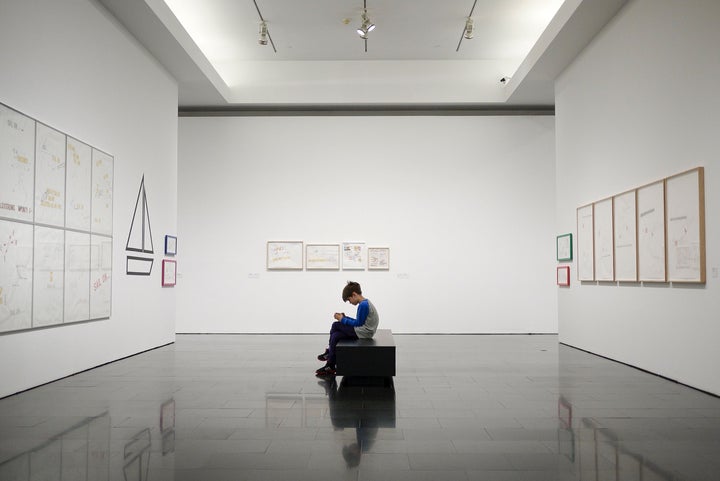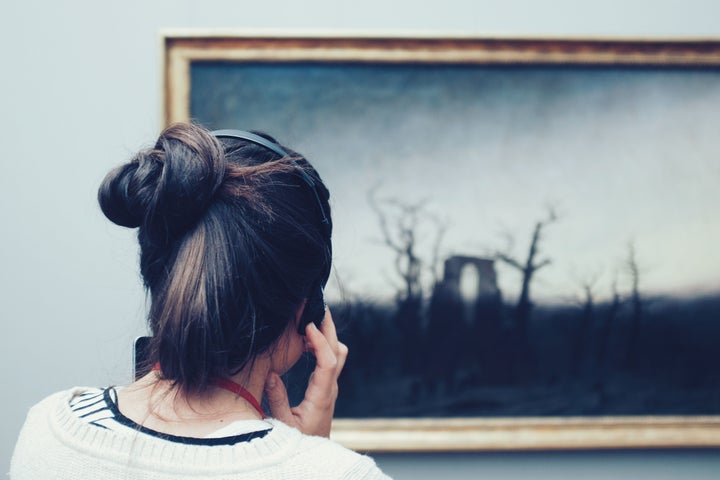Art appreciation and art history are the most inter-disciplinary modes of learning, as they link not only to the art work and the artist but to the science, language, politics and society at that particular point in time. Art appreciation is not just about recognising a Picasso or a Matisse. It is introducing children to a new way of seeing. Art appreciation is also not about spewing facts and figures about an artwork. Rather it is helping our children become more sensitive to others’ point of view, and to visual expression and imagery around them.
Knowing about art history can have immense benefits for a child’s development. It teaches them that art is an integral part of our lives, and that it is all around us. It also fosters a love of art and culture from an early age.

Here are the 5 main ways that art education and appreciation is beneficial for a child’s development:
1. Observation: Looking at artwork helps child’s observation skills. By focussing on an inquiry-based learning rather than skills-based learning, we can encourage children to look more closely and observe visual cues and symbols. It also creates a more mindful approach to life from a young age, where children take time to look around them. When children learn to visualise through careful observation, and imagine, this can extend into other areas of their learning. For instance, this helps with their reading skills, as children who can visualise what they are reading are much stronger readers.
2. Reflective Questioning: By asking open-ended questions, children can be encouraged to reflect on their own emotional response to the artwork. This motivates deeper thought and consideration of different points of view, as well as encouraging confidence in their own likes and dislikes. Art is a very useful way of nurturing reflection in children, as it is directly linked to emotions, and there is not always a right or a wrong answer. It can also be used to prompt discussions about why people make art, and why art is useful.
3. Analytical Ability: Looking at artwork, and artist’s motivations and context helps children understand how visual images are shaped by the context that they are set in. This will help them understand and respond to the images around them in print and on social media. Thinking about colour, composition, and scale can prompt discussions not only about the artwork, but also perspective, science, history, society and so on.
4. Communication: By encouraging children to talk about art, they learn vocabulary around art, and gain fluency in expressing themselves more articulately. By describing a piece of art, children expand their word power and it translates to everything around them, including the ability to be able to talk about their emotions and feelings. By prompting the child to be more specific, and asking them open questions, such as ‘Tell me why you feel this?’, helps children make better connection between words.
5. Discussion: Talking about art is a good way to teach children important negotiation and discussion skills. Listening to others’ point of view, and contributing our own is a difficult skill to learn. It also provides an opportunity for valuable family time, as parents and children discuss the art in front of them. It provides an opportunity for children to learn to work collaboratively, and use language effectively to express clearly to others what they see, how they feel, and why.
Learning about art enables children to create their own versions of the past, and present, and visualise what they want their future to be.
This kind of learning is most effective when parents engage actively with children through discussion and analysis. Observing, reflecting and questioning art works helps children discard preconceptions. Most importantly, it helps reinforce the message that there is not just one way to be artistic and to make art, and that inner emotions, feelings and desires can be expressed in so many different ways. Tools and techniques that enable us to introduce art in an easy, accessible and fun way to children can help remove the perception that art is ‘highbrow’ or only for a few sections of the society.

We are so bombarded with technology around us. Children, as young as two, are using tablets. Everything in technology is instant at the click of a button. It does not allow the opportunity for children to take their time and observe slowly. This is why it is so important that we engage our children in activities that develop not only their motor skills, but also social, emotional and cognitive skills. Art appreciation can do this.